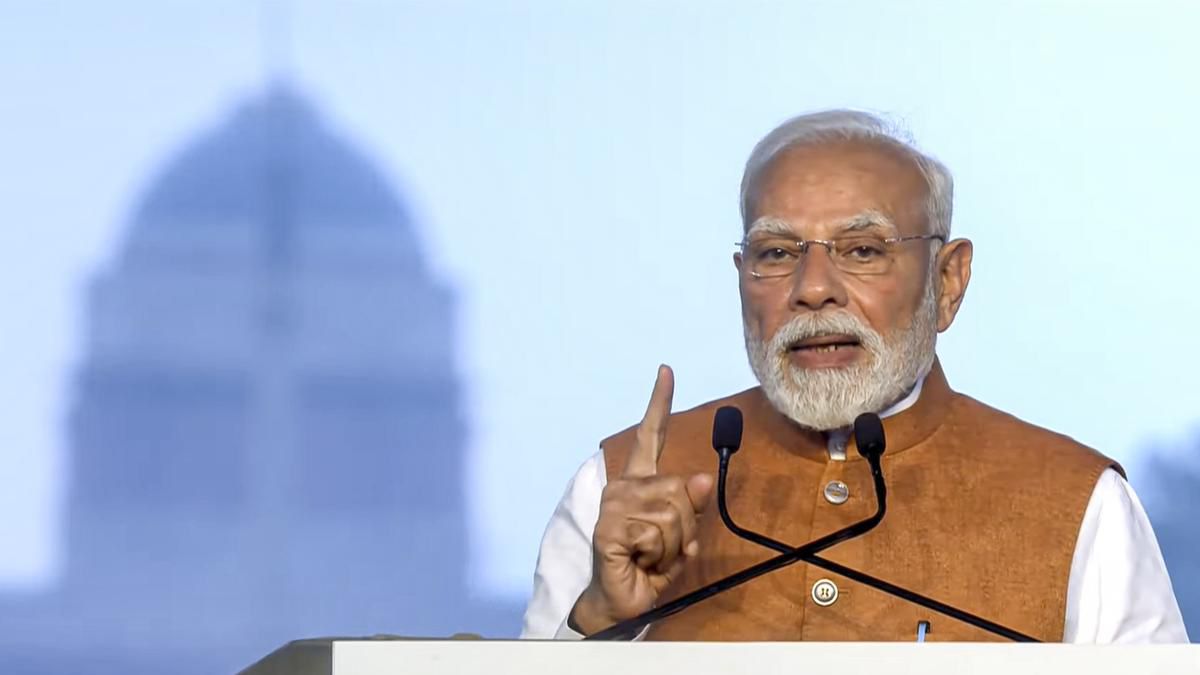 Image Source: The Hindu
Image Source: The Hindu
Prime Minister Narendra Modi recently highlighted the transformation India has undergone in governance during his tenure, emphasizing the emergence of a transparent, sensitive, and citizen-centric administration over the past 11 years. His remarks came during the inauguration of Kartavya Bhavan, the first of ten modern Common Central Secretariat buildings, symbolizing a new era of efficient and inclusive governance aligned with India’s global vision and development goals.
Key Highlights: Governance Transformation and Infrastructure Modernization
PM Modi underscored the shift from decades-old, inadequate British-era government buildings that compromised working conditions, to a state-of-the-art administrative complex—Kartavya Bhavan—that reflects India’s commitment to transparency, efficiency, and service to its citizens.
He described the new infrastructure as embodying the resolve to fulfil the nation’s dreams and guide the policies crucial for a developed India, focusing on citizen convenience and time-bound service delivery.
The Prime Minister emphasized that governance under his administration strongly adheres to principles of openness and accountability, involving people directly in decision making with initiatives such as online policy drafts for public feedback and ‘One Day Governance’ to ensure timely services.
He noted that the governance model over the past decade and more is not only transparent but also sensitive to citizen needs, removing red tape and placing equal importance on accessibility and responsiveness.
Governance as a Driver of National Progress
Modi remarked that India’s pace of development must accelerate in comparison with other countries that gained independence around the same time, stressing collective responsibility in writing the success story of ‘Make in India’ and ‘Aatmanirbhar Bharat’ (Self-Reliant India).
He urged all stakeholders to focus on scaling productivity and fostering an environment where governance empowers citizens, industry, and communities alike.
The Prime Minister reinforced the idea that governance reforms are critical foundations for India’s aspiration to become a developed nation with a clean, efficient, and tech-savvy administrative framework.
Focus on Transparency and Citizen-Centric Policies
The government’s approach has centered on removing opaque administrative practices and instituting systems that enable real-time monitoring and evaluation, leveraging digital technologies.
Initiatives like Garib Kalyan Melas ensure direct delivery of benefits to vulnerable populations, and transparency mechanisms allow citizens equal participation, making governance inclusive and fair.
PM Modi’s vision rests on making every government interface straightforward and eliminating unnecessary intermediaries, promoting a culture of ‘serve the citizen’ rather than bureaucracy.
Symbolism of Kartavya Bhavan and Future Outlook
The inauguration of Kartavya Bhavan is emblematic of this renewed governance spirit—an architectural and operational beacon reflecting India’s determination to integrate transparency, functionality, and citizen-first mindset in public administration.
The Prime Minister viewed it as an opportunity for introspection on India’s developmental trajectory and a call to uphold the legacy of serving future generations by solving present challenges decisively.
Moving forward, the government aims to consolidate the gains in governance transparency and further embed technology and sensitivity to citizen needs into all layers of administration.
Conclusion
Prime Minister Narendra Modi’s commitment to transparent and sensitive governance over the past 11 years has laid a strong foundation for India’s rise as a developed nation. By combining visionary infrastructure projects like Kartavya Bhavan with people-centered policies and digital inclusivity, the country is steering towards a future where governance truly belongs to and benefits every citizen. This transformative journey stands as a testament to India’s determination to build a resilient, just, and agile administrative ecosystem.
Sources: Economic Times, Press Information Bureau India
Advertisement
Advertisement




